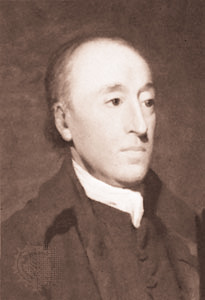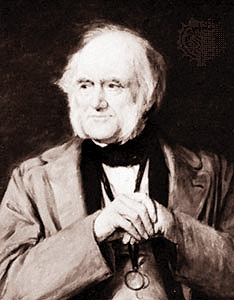Uniformitarianism is one of the most important unifying concepts in the geosciences. This concept developed in the late 1700s, suggests that catastrophic processes were not responsible for the landforms that existed on the Earth's surface. This idea was diametrically opposed to the ideas of that time period which were based on a biblical interpretation of the history of the Earth. Instead, the theory of uniformitarianism suggested that the landscape developed over long periods of time through a variety of slow geologic and geomorphic processes.
The term uniformitarianism was first used in 1832 by William Whewell, a University of Cambridge scholar, to present an alternative explanation for the origin of the Earth. The prevailing view at that time was that the Earth was created through supernatural means and had been affected by a series of catastrophic events such as the biblical Flood. This theory is called catastrophism.
The ideas behind uniformitarianism originated with the work of Scottish geologist James Hutton. In 1785, Hutton presented at the meetings of the Royal Society of Edinburgh that the Earth had a long history and that this history could be interpreted in terms of processes currently observed. For example, he suggested that deep soil profiles were formed by the weathering of bedrock over thousands of years. He also suggested that supernatural theories were not needed to explain the geologic history of the Earth.

Figure 10c-1: James Hutton, 1726-1797.
Hutton's ideas did not gain major support of the scientific community until the work of Sir Charles Lyell. In the three volume publication Principles of Geology (1830-1833), Lyell presented a variety of geologic evidence from England, France, Italy, and Spain to prove Hutton's ideas correct and to reject the theory of catastrophism.

Figure 10c-2: Sir Charles Lyell, 1797-1875.
The theory of uniformitarianism was also important in shaping the development of ideas in other disciplines. The work of Charles Darwin and Alfred Wallace on the origin of the Earth's species extended the ideas of uniformitarianism into the biological sciences. The theory of evolution is based on the principle that the diversity seen in the Earth's species can be explained by the uniform modification of genetic traits over long periods of time.
Thus, uniformitarianism suggests that the continuing uniformity of existing processes should be used as the framework for understanding the geomorphic and geologic history of the Earth. Today, most theories of landscape evolution use the concept of uniformitarianism to describe how the various landforms of the Earth came to be.